A cave village, a stone slab castle and a 100 kg stray dog, a strange festival that turns into a tiger… “The 3 Best Unexplored Places in China” as seen by a frontier photographer
Frontier photographer Tetsuo Kurita tours China's unknown and unexplored regions.
If such an unexplored region really exists in this day and age, I would love to visit it before it disappears. With this in mind, I decided to visit a “cave village.
The “Cave Village” exists in Guizhou Province in southwestern China. Its interior walls are made of pale gray limestone with countless craters spreading out like a beehive, just like the surface of the moon. Inside the huge cave, 115 m wide, 50 m high, and 215 m deep, 18 houses were occupied by more than 80 Miao people.
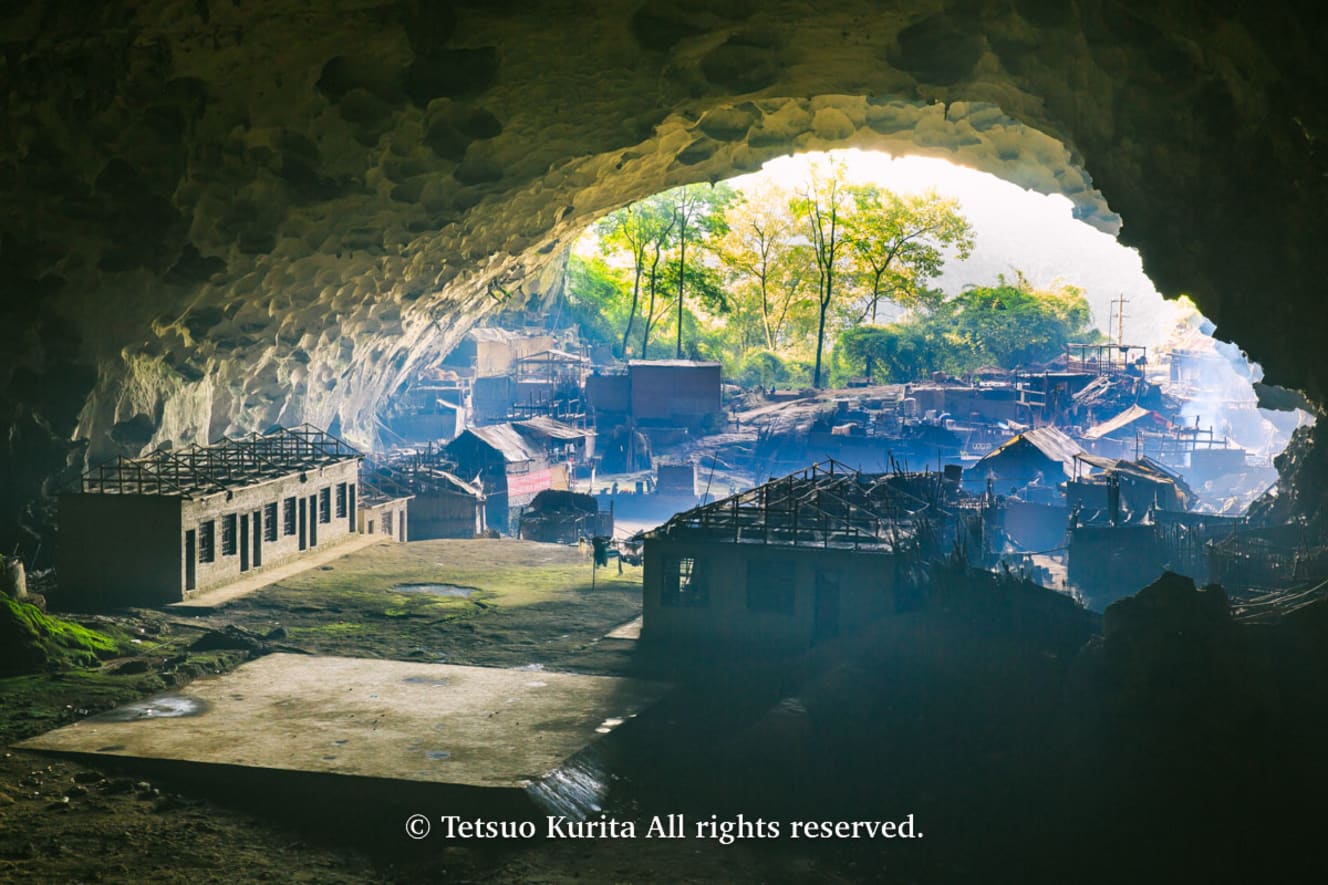
In contrast to the rainy outside, the inside of the cave is quiet. The weather has nothing to do with life here. Even though it was raining, laundry was drying outside the house. The houses have no roofs because they are unaffected by the weather. I stood at the entrance of the cave with a soaked body, feeling the quality of the living environment.
It was interesting to note that some houses had no roofs, but only roof frames such as hipped bundles and ridge frames. This is probably one of the main reasons why the cave village looks so strange visually.
I walked into the cave. Just a few steps into the cave, it was cool and refreshing, a far cry from the hot and humid outside.
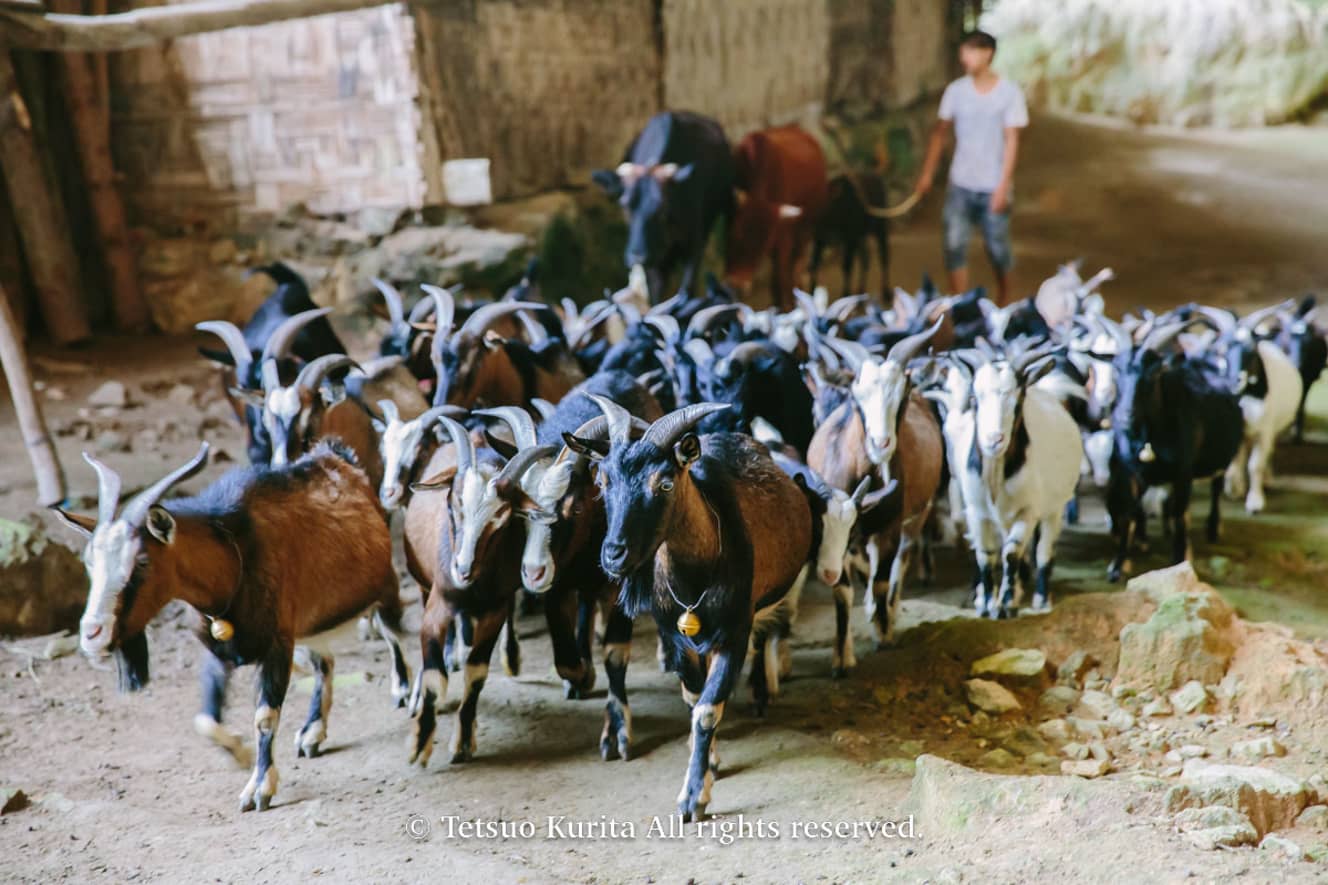
While walking through the village, a woman, who appeared to be in her 60s, approached me. In the course of our chat, I asked her a common question about why she continues to live here. She replied with a smile, “It is cool in the cave in the summer.
It is cool in the cave in the summer and not too cold in the winter. It’s a very comfortable place to live. It never rains. It’s like a paradise.
Some young people have left the village but come back again, saying, “The land where I was born and raised is the best. I thought that this “Shangri-La” (
While browsing through a Chinese airline’s in-flight magazine, a picture caught my eye and I decided to go to the Selshu area (western Sichuan Province), where the picture was taken.
On the way there, I saw a huge number of stone slabs piled up like Lego blocks. They were so huge that they looked like “castles. The driver stopped the car in front of the castle. We got out of the car and walked there together.
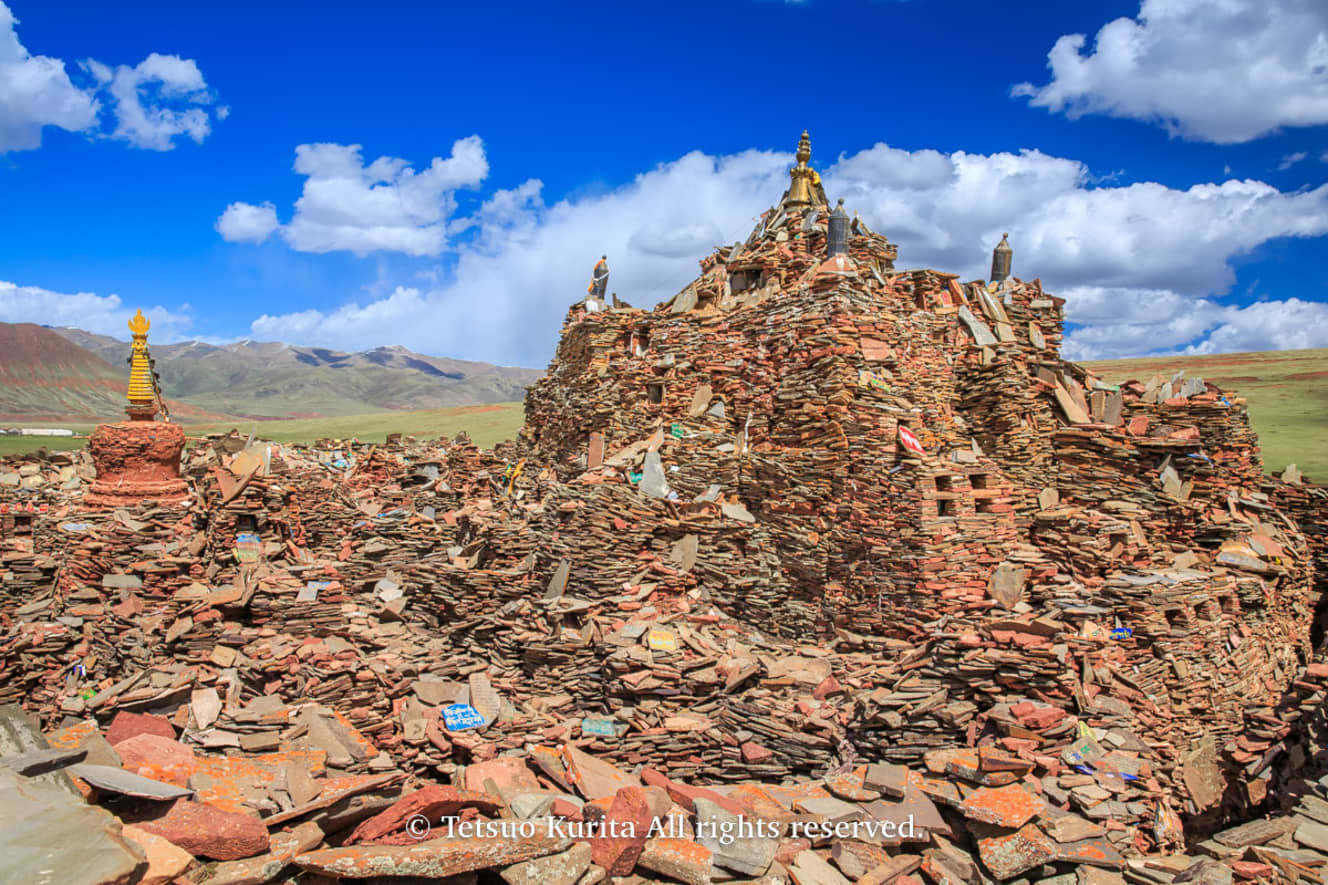
Looking closer, I finally realized what it was. All the stone slabs were mani stones carved with “om mani pemehum,” a mantra or sutra. This place is called Songa Mani Stone Sutra Castle, and as the name suggests, it was indeed a castle of mani stones.
Tibetan Buddhists praying fervently toward the castle. Dozens of people, young and old, were making a clockwise korla (pilgrimage) around the perimeter. Among them, there were a few stray dogs with the blood of Tibetan mastiffs.
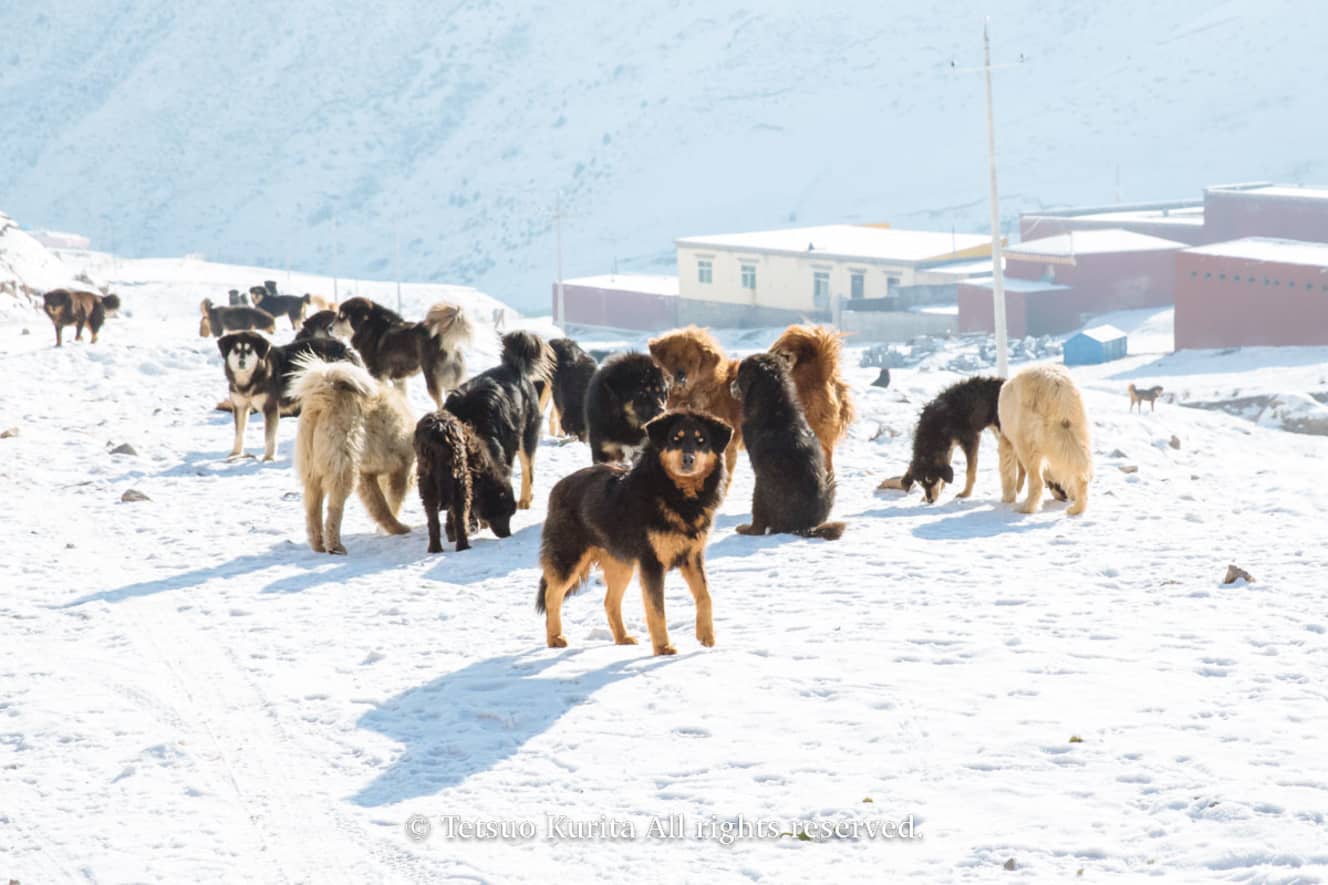
Tibetan mastiffs are kept as sheepdogs and guard dogs in the mountainous areas of Tibet. The purebreds have a lion-like mane around their necks, are 100 to 140 cm in length, and weigh more than 100 kg. Such ferocious Tibetan mastiffs are abundant outside the inn. Moreover, the “mastiffs,” who had been docile during the day, turned ferocious at night.
But it was only at such times that I felt the need to go to the restroom. The only restrooms are outside the lodge. If you had a plastic bag or a plastic bottle, you could do your business without going outside, but you do not have it with you. I had no choice but to calm my mind and go to bed in a state of nothingness. However, there was no way I could sleep soundly while enduring the urge to urinate, and I woke up several times in the middle of the night. Each time I woke up in the middle of the night, writhing and writhing in agony, and finally the sun came up.
I rushed to the front grassy field, where three people were already waiting for me. It seemed that I was not the only one who had been desperately struggling with myself last night. My eyes met theirs and I couldn’t help but smile.
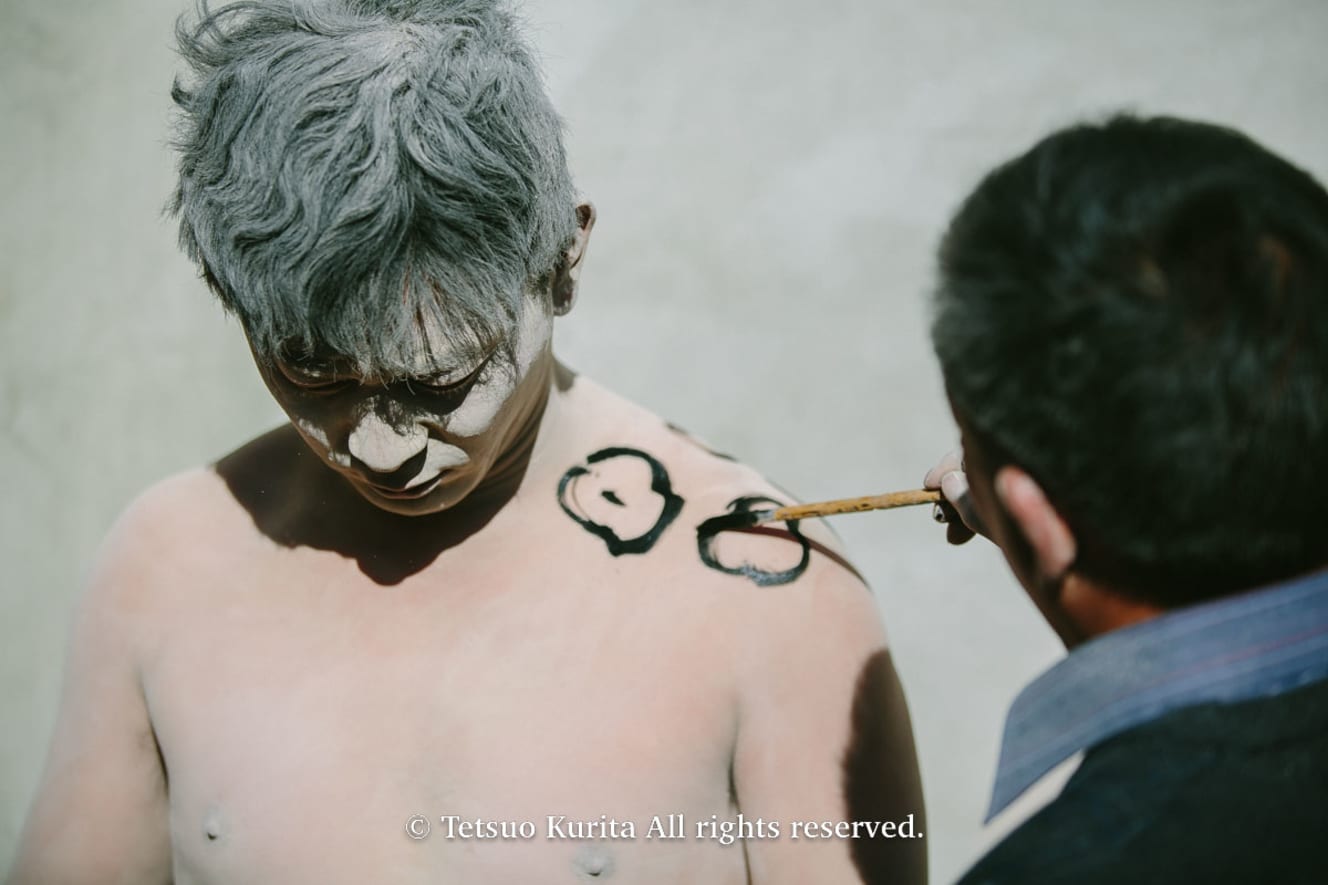
Seven men paint ashes all over the body. After the entire body is painted white, the next step is makeup. The hawa (shaman) and his assistant draw patterns on the bodies of the seven men using ink mixed with sake and a brush. Thus the men became “tigers. The essence of this festival lies in the fact that this ferocious tiger exorcises demons and repels diseases.
After dancing in the square, the seven tigers run around the village, visiting houses. Villagers prepare meat and fruit for the tigers to eat. They say that by doing so, they ward off evil spirits. However, the tigers cannot visit every house in the village to drive away evil spirits. So, the women prepare a hard, doughnut-shaped bread called kanzu, about 30 cm in diameter, and insert it into a long bamboo pole that they carry.
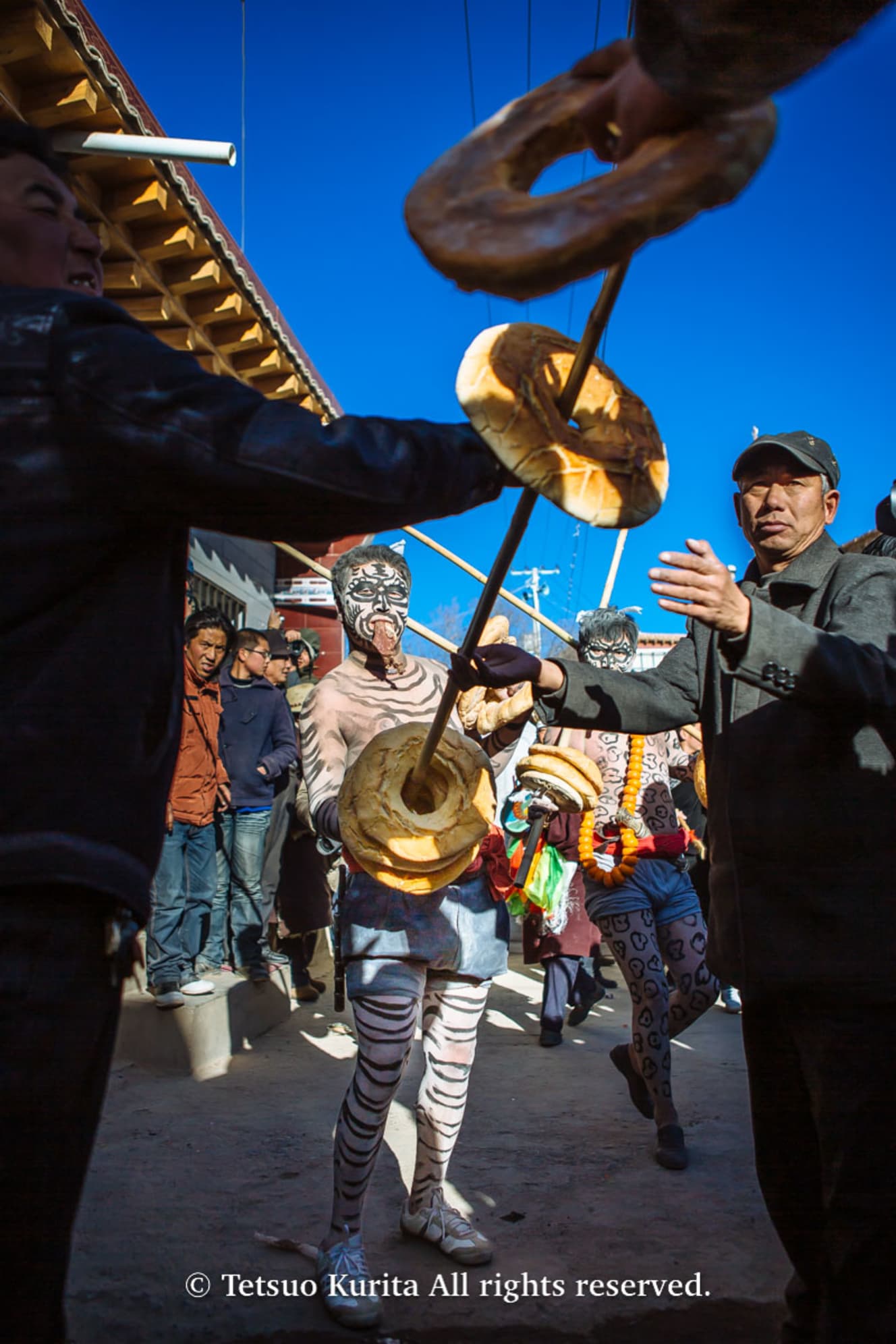
It is said that if the tiger accepts the “ganzi,” it will remove bad luck from the villagers as well.
China is home to 56 ethnic groups, each with their own customs and traditions. In addition, there are differences from region to region. I hope you will read this book as if you were on a journey through the diverse cultures that China encompasses, and I hope you will find it interesting.
Would you like to go on a journey with me? In this book. Happy travels!
Click here to purchase “Dancing Tigers: Touring the Culture of China’s Frontier”.
Photographs and text: Tetsuo Kurita